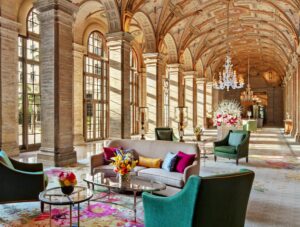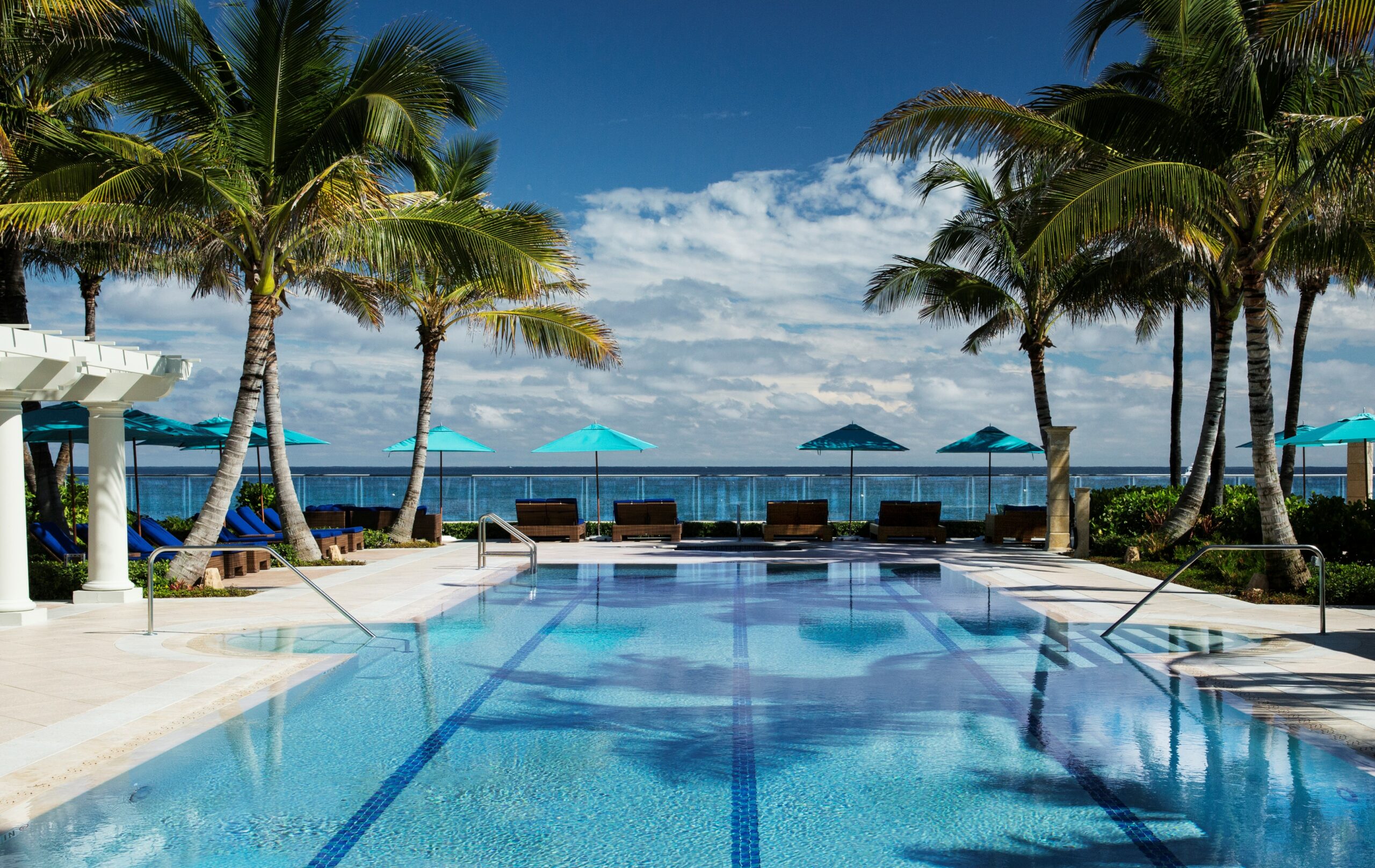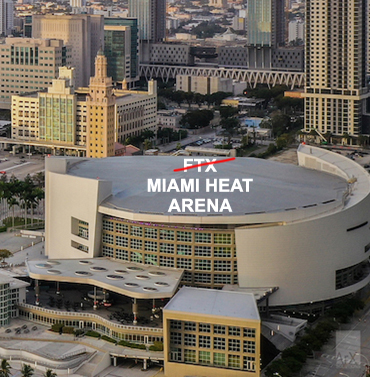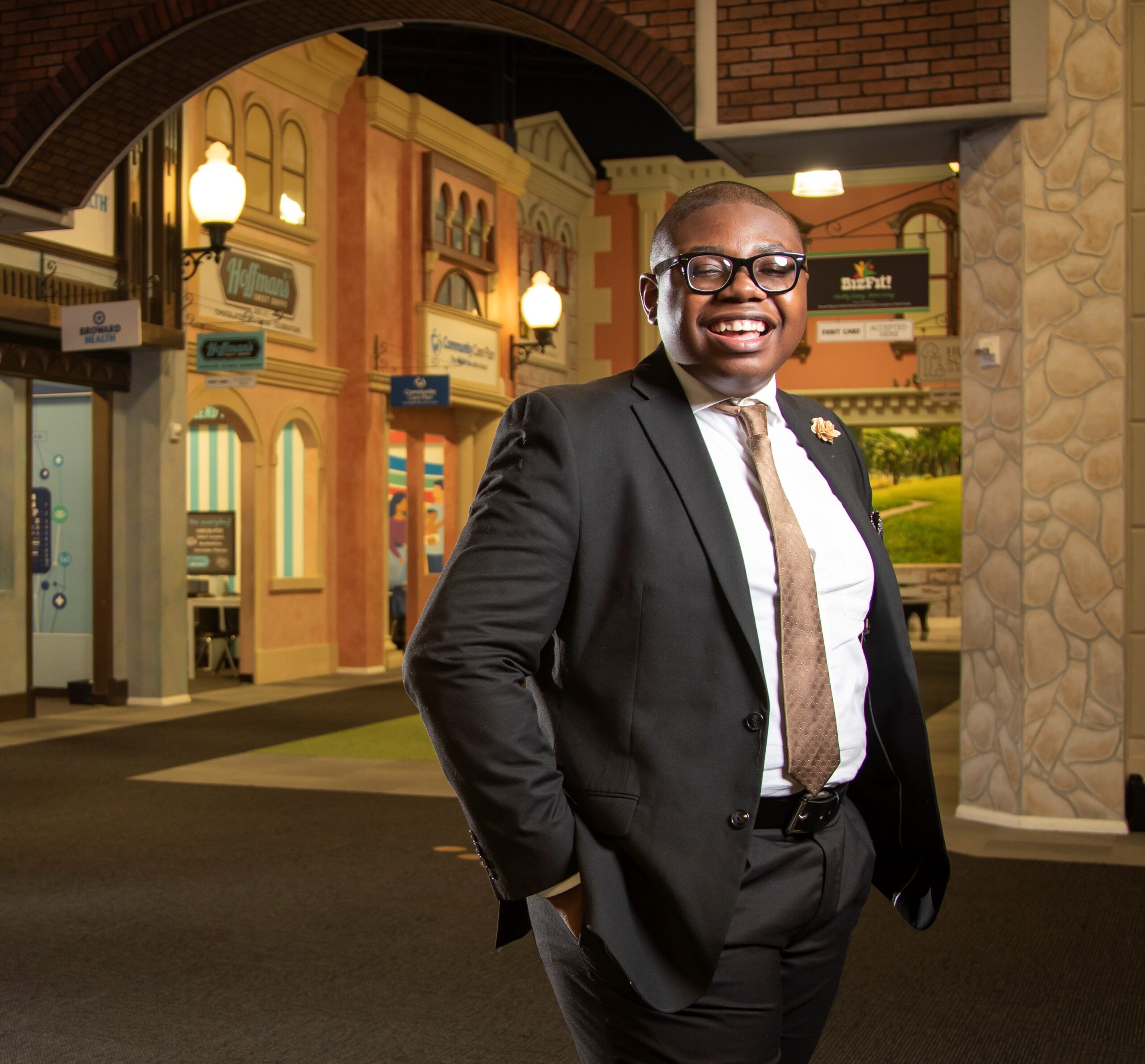 First, there’s the history. Second, there’s the opulence. These are the two signifiers of the Breakers, Palm Beach’s 538-room hospitality behemoth that endures and thrives, independent of any chain affiliation.
First, there’s the history. Second, there’s the opulence. These are the two signifiers of the Breakers, Palm Beach’s 538-room hospitality behemoth that endures and thrives, independent of any chain affiliation.
The history of the Breakers is inextricably connected to the cachet of Palm Beach and the annual winter migration of wealthy Northeasterners for “the season.” This is what Henry Flagler had in mind when he built the Breakers in 1896, and his heirs fulfilled the dream when they debuted the 1926 incarnation that lords above the beach today (both the original hotel and its 1904 replacement were destroyed by fire). Flagler and his family didn’t just build a hotel; he created a culture and a destination. In fact, one of Flagler’s many contributions to Florida was to popularize the idea that destination is culture.
On my visit last month, a young couple were walking through the lobby—or attempting to. The young man, overwhelmed, turned to the young woman next to him and said, “I’m trying to take pictures, but I don’t want to stop looking at all this.” It sounds like something a ringer or a shill would say, but the 200-foot-long lobby of the Breakers is used to that kind of reaction. Such is the achievement of the New York architectural firm of Schultze & Weaver, which designed the Biltmore hotel in Coral Gables at the same time, and, within a few years, would go on to conjure from the ground up some of Manhattan’s most legendary hotels: the Sherry-Netherland, the Pierre, the Waldorf-Astoria.
For the Breakers, the architects sought to recreate a palazzo from the Italian Renaissance, meant to emulate the Villa Medici in Rome (1544) and the Great Hall of the Palazzo Carrega in Genoa (1561). In that spirit, the lobby is framed by rows of columns, the barrel-vaulted ceiling adorned by twinkling Venetian glass chandeliers and the hand-painted artistry of 75 Italian craftsmen.
But to focus solely on the hotel’s history and its delirium-inducing opulence is to overlook the fact that the Breakers is committed to a project of continuous enhancement and relevance—set to the tune of $25 million in property upgrades a year. A new gym and spa appeared in the last few years, and until recently, the great expanse a few steps above the lobby was a formal affair with a French name (L’Escalier) and a fine dining menu. But tastes change, and today the space houses HMF, a chic cocktail lounge named for Henry Flagler and created by Tihany Design, which is arguably the hospitality world’s most-exalted interior architectural and design firm.
The Breakers’ collaboration with Tihany Design was inaugurated with the launch of HMF in 2012, and has continued as the firm worked on the Flagler Club—the hotel-within-the-hotel that offers butler service and culinary presentations—as well as the Seafood Bar (where the lobster tails are excellent) and ongoing guest room renovations. What the firm is doing with the accommodations is to reconceive them as sanctuaries of softness and lightness, in a mixed transitional style with subtle florals and elements of art deco and midcentury.
I immediately appreciated the nautical curves of the all-in-one polished wood unit that contains the minibar, the desk and a set of drawers, and when I noticed that the extra-long chaise had been pushed up against the glass sliders to allow me to revel in the panoramic ocean view, I thought, exactly. And when I realized that the upholstered headboard was backed by a contrasting padded textile bed wall, my reaction was that softness against softness was just what was needed.
But there came a time when I had to unwrap myself from the superlative Frette bedding and remind myself why this Palm Beach spot was chosen in the first place. The Breakers takes command of its locale like few other resorts in the world, as its golden, sandy beachfront is lined with no less than four pools. As a swimmer, that’s heaven. I swam an endless-seeming circuit from the saltwater lap pool (the water like velvet) to the even longer oblong pool, to the latest addition—a mirror-like pool set amid cottages and cabanas.
There’s an old rule about beach resorts: If the swimming pools are over-the-top, then the sea is likely lacking (rocky, or dangerous, or seaweed-filled). Not at the Breakers. That night there would be grilled swordfish washed down with a perfectly mixed Whitehall (vodka, St. Germain, white cranberry, lemon) at Henry’s, the Breakers’ new, off-property dining venue. No rush, though. As the afternoon faded, I took my time in the turquoise Atlantic, lucid and calm most days, with schools of small, slim fish brushing past my legs, doing their own water workout.














